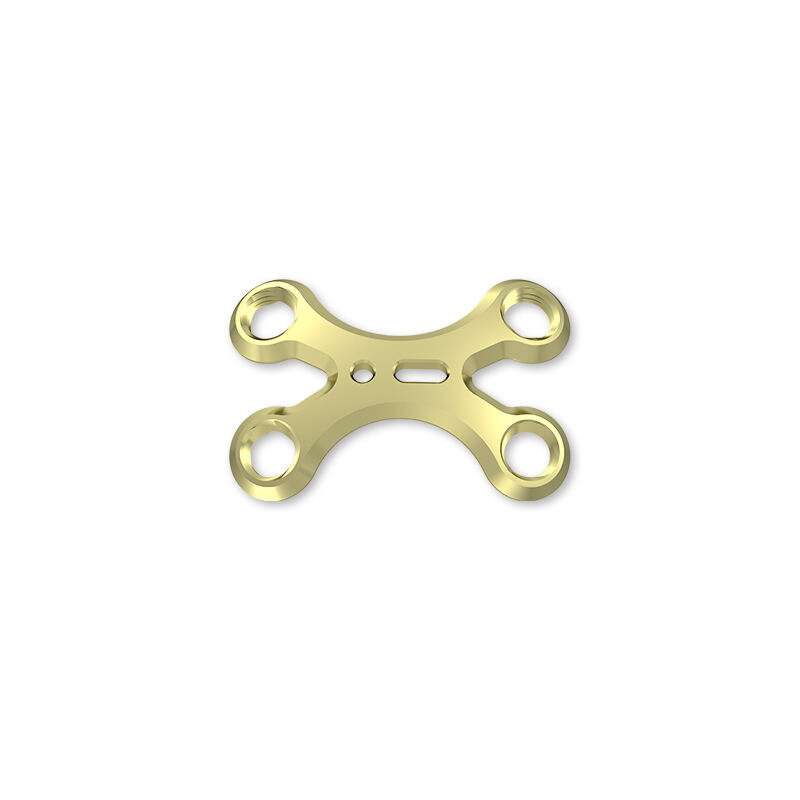Introduction
Maxillofacial plates play a vital role in facial reconstruction. These medical devices stabilize and support facial bones after injuries or surgeries. You might encounter them when addressing fractures or deformities. Surgeons use these plates to ensure proper alignment and healing, helping restore both function and appearance to the affected areas.
Understanding Maxillofacial Plates
What Are Maxillofacial Plates?
Maxillofacial plates are small, durable medical devices designed to stabilize facial bones. Surgeons use these plates to treat fractures, deformities, or other structural issues in the face. They are typically made from biocompatible materials like titanium or stainless steel, ensuring they do not harm your body. Some plates are even made from biodegradable materials, which dissolve over time as your bones heal. These plates act as scaffolding, holding bones in place while they fuse back together.
How Maxillofacial Plates Work in Surgery
During surgery, a surgeon carefully positions maxillofacial plates over the fractured or damaged bone. Screws secure the plates, ensuring they stay in place. This process restores the alignment of your facial structure and promotes proper healing. The plates provide stability, allowing you to regain normal function, such as chewing or speaking. Surgeons often customize the plates to fit the unique contours of your face, ensuring a precise and effective repair.
Types of Maxillofacial Plates
You will find several types of maxillofacial plates, each designed for specific needs. Standard plates are used for general fractures, while mini-plates are ideal for smaller or more delicate areas. Locking plates offer additional stability by securing screws tightly in place. Some plates are pre-contoured to match common facial shapes, while others are bendable, allowing surgeons to shape them during the procedure. The choice of plate depends on the location and severity of the injury.
Benefits and Risks of Maxillofacial Plates
Key Benefits of Maxillofacial Plates
Maxillofacial plates provide several advantages in facial reconstruction. They stabilize broken bones, allowing them to heal in the correct position. This stability helps restore essential functions like chewing, speaking, and breathing. These plates also improve the appearance of your face by ensuring proper alignment. Surgeons can customize them to fit your unique facial structure, which enhances the precision of the repair.
The materials used in these plates, such as titanium, are lightweight and biocompatible. This means your body is less likely to reject them. Some plates are even biodegradable, so they dissolve as your bones heal. This eliminates the need for a second surgery to remove them. With these benefits, maxillofacial plates play a crucial role in improving your recovery and quality of life.
Potential Risks and Complications
Although maxillofacial plates are highly effective, they come with potential risks. You might experience infection at the surgical site or irritation from the plates. In rare cases, your body could reject the material, causing inflammation. Plates that are not properly secured may shift, leading to complications in healing.
You should also be aware of long-term risks. Over time, the plates might cause discomfort or require removal. However, these issues are uncommon and often depend on factors like your overall health and the complexity of your injury.
Advances in Technology to Reduce Risks
Modern technology has significantly reduced the risks associated with maxillofacial plates. Surgeons now use 3D imaging to plan surgeries with greater accuracy. This ensures the plates fit perfectly and reduces the chance of complications. Advanced materials, such as bioresorbable polymers, have also improved safety. These materials dissolve naturally, eliminating the need for removal.
Robotic-assisted surgery is another innovation. It allows for precise placement of the plates, minimizing errors. These advancements make maxillofacial plates safer and more effective than ever before.
Applications and Recovery Process
Common Applications in Facial Reconstruction
You will find maxillofacial plates used in a variety of facial reconstruction procedures. These plates are essential for treating facial fractures caused by accidents or sports injuries. Surgeons also rely on them to correct congenital deformities, such as cleft palate or jaw misalignment. If you undergo surgery for facial tumors, these plates help restore the structure of your face after the removal of affected tissues.
In addition, maxillofacial plates play a key role in orthognathic surgery, which addresses issues like an overbite or underbite. They stabilize your jaw during the healing process, ensuring proper alignment. Whether the goal is functional improvement or aesthetic enhancement, these plates provide the support your facial bones need to heal correctly.
Recovery Timeline and Post-Surgical Care
Your recovery after surgery involving maxillofacial plates depends on the complexity of the procedure. Most patients begin to feel better within a few weeks. However, full recovery may take several months as your bones heal and regain strength.
Post-surgical care is crucial for a smooth recovery. You will need to follow your surgeon’s instructions carefully. This often includes maintaining a soft diet, avoiding strenuous activities, and keeping the surgical site clean. Regular follow-up appointments allow your doctor to monitor your progress and address any concerns.
Pain and swelling are common during the initial recovery phase. Your doctor may prescribe medication to manage these symptoms. By adhering to the recommended care plan, you can speed up your recovery and reduce the risk of complications.
Long-Term Outcomes and Success Rates
The long-term outcomes of surgeries involving maxillofacial plates are generally positive. These plates provide lasting stability, allowing your facial bones to heal in the correct position. Most patients experience significant improvements in both function and appearance.
Success rates for these procedures are high, thanks to advancements in surgical techniques and materials. Modern maxillofacial plates are designed to integrate seamlessly with your body, reducing the likelihood of rejection or discomfort. With proper care and follow-up, you can expect excellent results that enhance your quality of life.
Maxillofacial plates revolutionize facial reconstruction. They stabilize bones, restore function, and enhance appearance. You benefit from advanced materials and techniques that ensure safety and effectiveness.
Tip: Follow your surgeon’s advice for the best recovery. These plates not only heal your injuries but also improve your quality of life.

